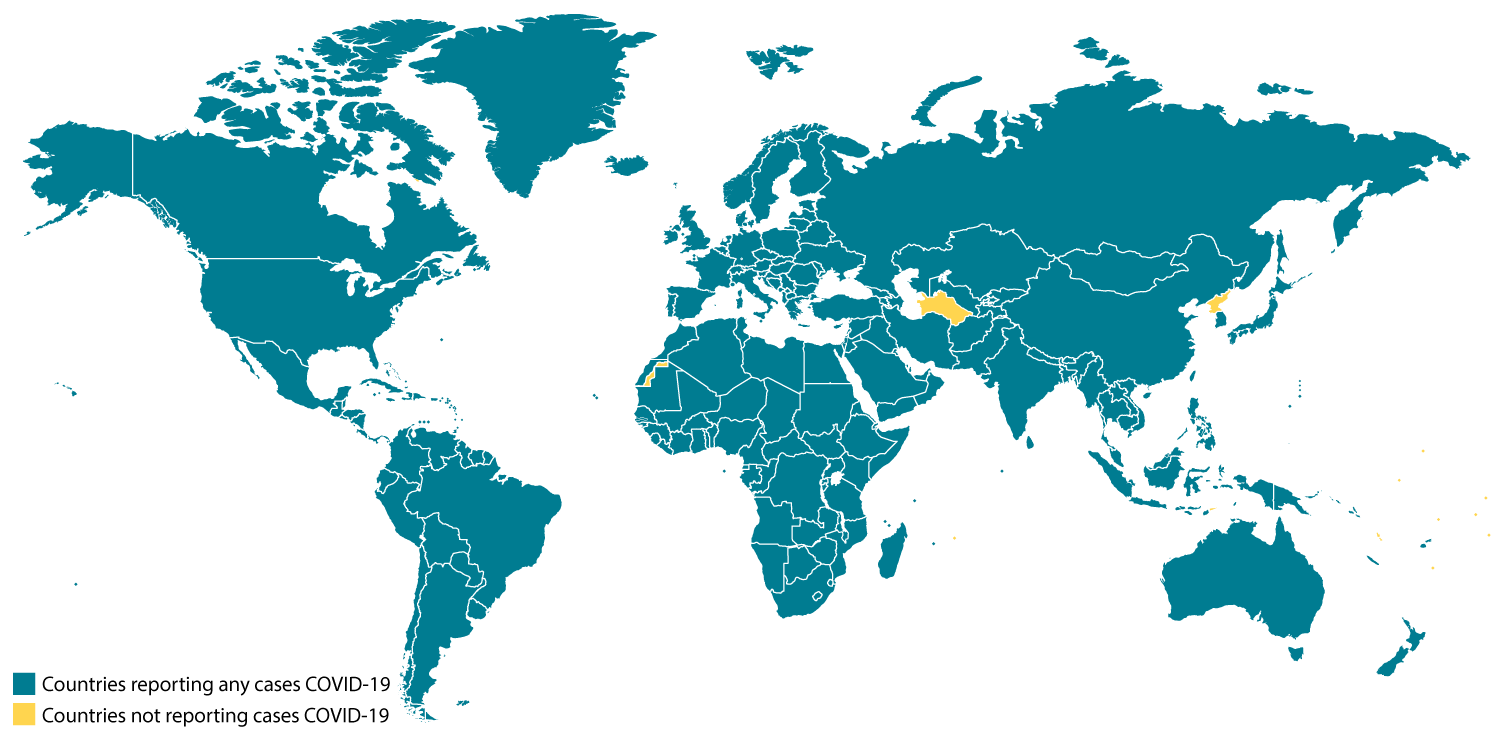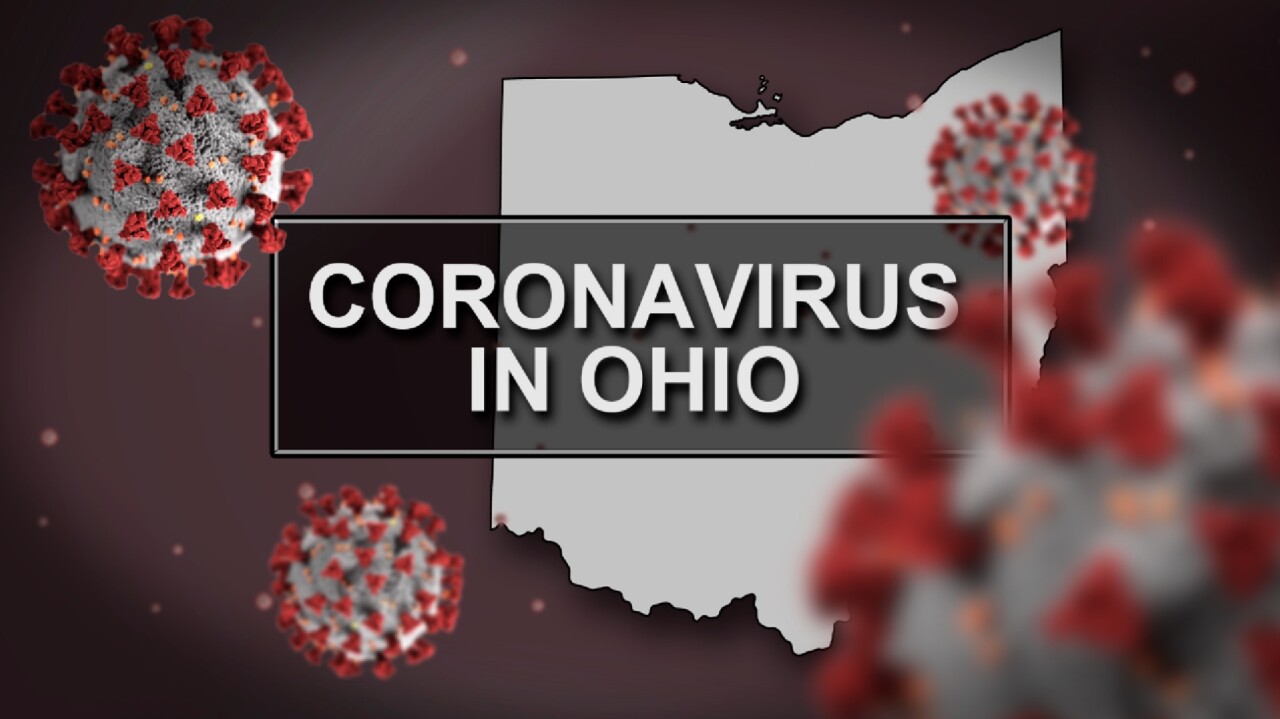CLEVELAND — You’ve probably seen the headlines over the past several weeks about stores running out of disinfectants and hand sanitizers, but if you didn’t get your hands on any of those products, you most likely have some household products that will kill COVID-19.
The good news here is that coronaviruses are some of the easiest types of viruses to kill with cleaning products.
Dr. Amy Edwards is a pediatric infectious disease doctor who works in conjunction with University Hospitals Roe Green Center. She said people should not be panicking about disinfecting their homes.
“You don't need to sterilize your home, one because you can't sterilize your home, and two because, you know, it's not going to help,” she said. “You really just need to focus on your high touch surfaces like you do during respiratory season, right? Your doorknobs, your countertops.”
While the EPA’s list of cleaners effective against COVID-19 includes most Lysol and Clorox products, there are many other products that also work.
Dr. Edwards said soap and water get the job done as good as anything else.
“Friction, believe it or not, actually does play a role in keeping surfaces clean,” she said.
Friction of rubbing surfaces can brawl protective envelops coronaviruses have around them.
“If you're running out of cleaning chemicals at home and the store is empty, there's nothing wrong with pulling out soap and water,” said Dr. Edwards.
If you have diluted bleach at home, that can also work. Remember to wear protective gloves and use 1/3 cup of bleach for every gallon of water.
Any cleaner with at least 70% alcohol should generally kill the virus.
According to the CDC, Hydrogen peroxide (3%) can kill the common cold virus, which experts say is harder to kill than coronaviruses, so it should work, too.
Dr. Edwards said there’s been no true comparison of natural cleaners vs. chemical disinfectants when it comes to the novel coronavirus.
“As far as vinegar and baking soda, yeah, these are these are good cleaning agents. There's no reason to suspect that they don't work, there's nothing about this virus that's different from other viruses.”
But she said anything that you normally do to keep your household clean and healthy during flu season, continue to do that.
“There's no reason to do anything different. The only thing that I will say about all of the commercial cleaners and even the non-commercial cleaners or the more natural cleaners, you do need to very carefully read the directions because some of them will say that your surface needs to remain wet for four minutes or for five minutes or for eight minutes before you can consider it disinfected,” she said.
As far as making your own hand sanitizer, it should be at least 60% alcohol, but if you make your own it could be tricky to get to that percentage and some recipes could be misleading.
Dr. Edwards said to protect yourself and your family, continue to wash your hands thoroughly and frequently.
Additional Coronavirus information and resources:
Below you can find information and resources on novel coronavirus, COVID-19, from local, state, national and international organizations, including the Cuyahoga County Board of Health, the Ohio Department of Health, the Centers for Disease Control and Prevention, and the World Health Organization.
News 5 will continue to update this section with new information, resources, links, and more as it is made available.
COVID-19/2019 Novel Coronavirus Overview from the CDC:
What is coronavirus disease 2019 (COVID-19)? Coronavirus disease 2019 (COVID-19) is a respiratory illness that can spread from person to person. The virus that causes COVID-19 is a novel coronavirus that was first identified during an investigation into an outbreak in Wuhan, China.
Can people in the U.S. get COVID-19? Yes. COVID-19 is spreading from person to person in parts of the United States. Risk of infection with COVID-19 is higher for people who are close contacts of someone known to have COVID-19, for example healthcare workers, or household members. Other people at higher risk for infection are those who live in or have recently been in an area with ongoing spread of COVID-19. Learn more about places with ongoing spread here.
Have there been cases of COVID-19 in the U.S.? Yes. The first case of COVID-19 in the United States was reported on January 21, 2020. The current count of cases of COVID-19 in the United States is available on CDC’s webpage here.
How does COVID-19 spread? The virus that causes COVID-19 probably emerged from an animal source, but is now spreading from person to person. The virus is thought to spread mainly between people who are in close contact with one another (within about 6 feet) through respiratory droplets produced when an infected person coughs or sneezes. It also may be possible that a person can get COVID-19 by touching a surface or object that has the virus on it and then touching their own mouth, nose, or possibly their eyes, but this is not thought to be the main way the virus spreads. Learn what is known about the spread of newly emerged coronaviruses here.
Download and read the CDC's full "What you need to know about coronavirus disease (COVID-19)" information sheet here.

Global case numbers are reported by the World Health Organization (WHO) in their coronavirus disease 2019 (COVID-19) situation report.

Coronavirus in Ohio:
As of Saturday, March 13, there were 26 confirmed cases of coronavirus in Ohio —11 are in Cuyahoga County, 3 in Stark County, 2 in Belmont County, 4 in Butler County, 2 in Summit County, 1 in Franklin County and 2 in Trumbull County. A total of 264 persons were under investigation for the disease. See the Coronavirus information page on the Ohio Department of Health's website for the latest numbers of confirmed cases and persons under investigation.
According to the governor, two of the confirmed cases are from a married couple that went on a cruise on the Nile River. The third Cuyahoga County case is from a person that went to the AIPAC conference in Washington D.C. According to a cantor from the Jewish Temple in Beachwood, 160 people from Cleveland attended the conference. The three patients are between 54 and 56-years-old, according to officials. Read more on those cases here.
On Wednesday, health officials announced a fourth case in Ohio - a man in his mid-50s in Stark County. This case is the first example in the state of "community spread," meaning the man had not traveled out of the country, and had no known contact with an international traveler. Read more on that case here.
The fifth case, announced Thursday, was in a 55-year-old Trumbull County man.
On Wednesday, DeWine announced some measures to stem the spread of coronavirus: limiting visits to nursing homes and holding sporting events without spectators.
On Thursday, DeWine took the state's response to the next level with two orders representing major, wide-ranging steps to stop the spread of the disease: an order prohibiting "mass gatherings" of over 100 people, with exceptions, and an order to close all Ohio K-12 schools for three weeks beginning at the end of the school day on Monday, March 16.
During that news conference, ODH Director Amy Acton also revealed that their department believes that at least 100,000 Ohioans are currently carrying the disease, a claim that has made national headlines.
On Friday, DeWine announced several new steps the state is taking to prevent the spread of coronavirus and provide relief to Ohio's residents, including an order stopping visitations at county jails, providing free breakfasts and lunches to Ohio's K-12 students, and a request to the Trump administration for regulatory and other relief as necessary.
Coronavirus' Impacts in Northeast Ohio:
Since the announcement of confirmed cases in Ohio, a number of local events, schools, facilities and more have announced closures, cancellations, postponements and changes as a result of coronavirus. News 5 is working to keep this information updated in the links below:
Here's a list of things in Northeast Ohio closed due to coronavirus concerns
Multiple Ohio colleges suspend in-person classes due to coronavirus concerns
The City of Cleveland has canceled its St. Patrick's Day Parade and the Cleveland International Film Festival, and issued a civil emergency in response to COVID-19.
More resources from News 5 and affiliates:
News 5's Coronavirus continuing coverage page
Worldwide Coronavirus Tracker from Johns Hopkins University
EPA releases list of approved disinfectants to use against COVID-19
How to protect yourself from coronavirus when flying
Think you may have the coronavirus? Here’s what to do
A state of emergency was issued in Ohio following 3 positive COVID-19 cases. Here's what it means.
Cuyahoga County Medical Director answers your questions about coronavirus
Symptoms
The symptoms of coronavirus are fever and lower respiratory tract issues, such as cough and shortness of breath, according to the Cuyahoga County Board of Health.

Travel
Anyone traveling internationally should review plans in advance of their trip, and check the CDC’s COVID-19 Travel Information Page for daily updates and travel alerts.
Click here for the CDC COVID-19 Travel Information Page
Practice Good Hygiene
The CCBH recommends the following good hygiene practices to prevent coronavirus, as well as the flu, colds and other illnesses:
Sneeze or cough into the bend of your elbow to keep germs from spreading
Regularly wash your hands with soap and water/use alcohol-based hand sanitizer in between
Don’t share cups, spoons, forks, etc. with anyone
Don’t make food for anyone if you are sick
Don’t go to work or school if you are sick
Visit a doctor, urgent care or emergency department if you are sick – don’t take chances
Please contact your medical provider with any questions.
Guidance for those with compromised immune systems
Click here for specific guidance from the CCBH for anyone at higher risk for becoming ill.
Additional Resources
Cuyahoga County: See the CCBH page on coronavirus here.
Ohio Department of Health:
Click here for the Ohio Department of Health’s Coronavirus information page.
It is updated daily at 2 p.m. with the current number of confirmed cases, persons under investigation and persons under investigation who tested negative for the disease.
Guidance for schools
Guidance for travelers
What you can do to stop the spread of COVID-19 – Chinese
What you can do to stop the spread of COVID-19 – English
What you can do to stop the spread of COVID-19 – Spanish
If you are sick with COVID-19 – English
If you are sick with COVID-19 – Spanish
Ohio Secretary of State:
Preventing spread of COVID-19 at election/polling/voting locations
Prevention and treatment
Symptoms – overview
Centers for Disease Control and Prevention
World Health Organization
Coronavirus information
Mythbusters – the truth about food, packages, pets and other things related to COVID-19
Fact sheet – Chinese
Video – What is COVID-19?
Video – What is my risk of getting COVID-19?
Video – How can I protect myself from COVID-19?
Guidance for businesses
Guidance for colleges and universities
Guidance for communities and mass gatherings
Guidance for healthcare facilities
Guidance for healthcare professionals
Guidance for people with elevated risk for illness
Guidance for pregnant women
Guidance for risk assessment
Guidance for schools
Guidance for travelers
What you can do to stop the spread of COVID-19 – Chinese
What you can do to stop the spread of COVID-19 – English
What you can do to stop the spread of COVID-19 – Spanish
If you are sick with COVID-19 – Chinese
If you are sick with COVID-19 – English
If you are sick with COVID-19 – Spanish
Preventing spread of COVID-19 at election/polling/voting locations
Prevention and treatment
Symptoms – overview
World Health Organization
Coronavirus information
Mythbusters – the truth about food, packages, pets and other things related to COVID-19
Video – What is COVID-19?
Video – What is my risk of getting COVID-19?
Video – How can I protect myself from COVID-19?



